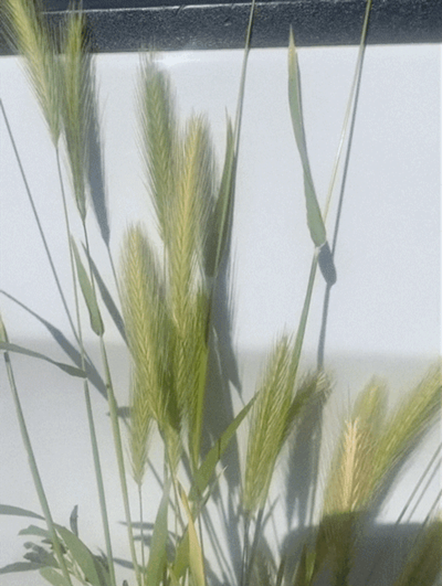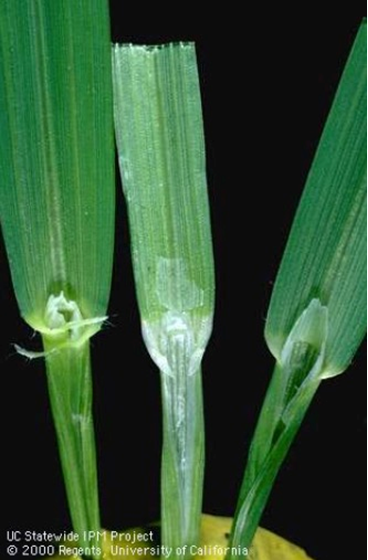
Hi, I’m Chris, and I’m thrilled to be stepping into the role of extension associate for plant pathology through The University of Arizona Cooperative Extension in Yuma County. I recently earned my Ph.D. in plant pathology from Purdue University in Indiana where my research focused on soybean seedling disease caused by Fusarium and Pythium. There, I discovered and characterized some of the first genetic resources available for improving innate host resistance and genetic control to two major pathogens causing this disease in soybean across the Midwest.
I was originally born and raised in Phoenix, so coming back to Arizona and getting the chance to apply my education while helping the community I was shaped by is a dream come true. I have a passion for plant disease research, especially when it comes to exploring how plant-pathogen interactions and genetics can be used to develop practical, empirically based disease control strategies. Let’s face it, fungicide resistance continues to emerge, yesterday’s resistant varieties grow more vulnerable every season, and the battle against plant pathogens in our fields is ongoing. But I firmly believe that when the enemy evolves, so can we.
To that end I am proud to be establishing my research program in Yuma where I will remain dedicated to improving the agricultural community’s disease management options and tackling crop health challenges. I am based out of the Yuma Agricultural Center and will continue to run the plant health diagnostic clinic located there.
Please drop off or send disease samples for diagnosis to:
Yuma Plant Health Clinic
6425 W 8th Street
Yuma, AZ 85364
If you are shipping samples, please remember to include the USDA APHIS permit for moving plant samples.
You can contact me at:
Email: cdetranaltes@arizona.edu
Cell: 602-689-7328
Office: 928-782-5879
Over the last couple of years, we developed a prototype steam applicator for injecting steam into the soil prior to planting. The concept behind soil steaming is similar to soil solarization - heat the soil to levels sufficient to kill soilborne pathogens and weed seeds (typically 140 °F > 20 minutes). The device is principally comprised of a 63 BHP steam generator mounted on an elongated bed shaper (Fig. 1). The apparatus applies steam via shank injection and from rectangular ports on top of the bed shaper. After cooling (< ½ a day), the crop is planted into the disinfested soil.
Trial results have been very promising and reported in previous UA Veg IPM articles. In brief, the multi-year studies have shown that soil steaming provides excellent weed control (>90%), suppresses problematic soilborne diseases (Fusarium wilt of lettuce> 50%, lettuce drop > 70%) and increases crop yields (>24%).
This season, we would like to demonstrate the technique to interested growers. In addition to obtaining grower feedback on the viability of soil steaming, a second objective would be to validate our small plot research results at the field scale level. The machine can be adjusted to work with most bed configurations including 40”, 42”, 80” and 84” beds, and work with any crop, including organic crops (soil steaming is organically compliant). So far, the device has been successfully tested in iceberg lettuce, romaine, baby leaf spinach and carrot crops.
If you are interested in an on-farm demo of soil steaming, please let me know. I’d be happy to work with you.
Fig. 1. a) Band-steam applicator principally comprising a 63 BHP steam generator
mounted on a bed-shaper applicator sled. Steam applicator sled b) top view and
c) bottom view. Click here or on the image above to see the device in action.

Image by: Jim Daily
Hare Barley, Mediterranean, or Wild Barley (Hordeum murinum) has been increasing at the Yuma AZ Valley and the Mesa. This week we have received some samples for ID from our friend PCAs.
It’s a cool season annual grass native to Europe with dense stiff awned spikes. Early in the season before the flower spikes develop, they can be a very good forage but when the spikes emerge can injure the mouths, eyes, nasal passages, ears, and skin of animals.
It is found throughout California up to 3300 feet (1000 m) and inhabits agricultural land, disturbed sites, and unmanaged natural areas3. The seedheads are unbranched, awned, stems and leaves are hairless, and the ligules are membranous. The collar region and auricles can be seen in the image below from the University of CA3.
The Hordeum murinum complex is the most widespread of all the other Hordeum species, and the origin of its distribution of was Central Europe, the Mediterranean area, North Africa, and Western Asia1.

Collar region of (left to right) hare (wild) barley, wheat, and wild oat.
Photo by Jack Kelly Clark3.
References:
This time of year, John would often highlight Lepidopteran pests in the field and remind us of the importance of rotating insecticide modes of action. With worm pressure present in local crops, it’s a good time to revisit resistance management practices and ensure we’re protecting the effectiveness of these tools for seasons to come. For detailed guidelines, see Insecticide Resistance Management for Beet Armyworm, Cabbage Looper, and Diamondback Moth in Desert Produce Crops .
VegIPM Update Vol. 16, Num. 20
Oct. 1, 2025
Results of pheromone and sticky trap catches below!!
Corn earworm: CEW moth counts declined across all traps from last collection; average for this time of year.
Beet armyworm: BAW moth increased over the last two weeks; below average for this early produce season.
Cabbage looper: Cabbage looper counts increased in the last two collections; below average for mid-late September.
Diamondback moth: a few DBM moths were caught in the traps; consistent with previous years.
Whitefly: Adult movement decreased in most locations over the last two weeks, about average for this time of year.
Thrips: Thrips adult activity increased over the last two collections, typical for late September.
Aphids: Aphid movement absent so far; anticipate activity to pick up when winds begin blowing from N-NW.
Leafminers: Adult activity increased over the last two weeks, about average for this time of year.







